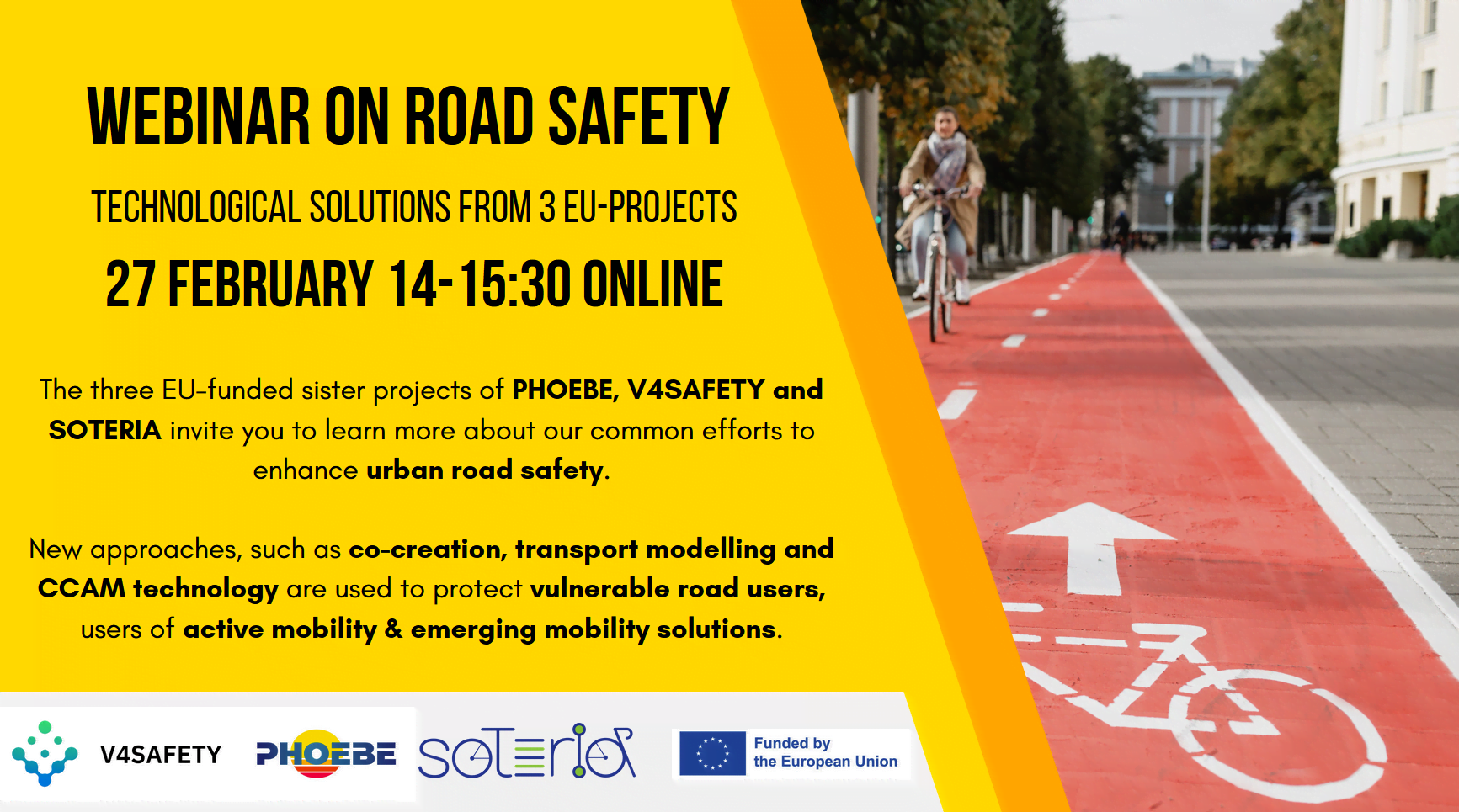Road safety webinar marks start of cooperation between PHOEBE sister projects
Sixty stakeholders from across Europe and beyond attended joint webinar on state-of-the-art solutions of transport modelling to enhance the safety of vulnerable road users of the three sister projects of PHOEBE, SOTERIA and V4SAFETY, which took place on Monday, 27 February on Zoom. You can find the recording here and the presentations of the three projects on the bottom of this article.
Since all three projects are stemming from the same EU-funding call, cooperation between the three consortia was a logical consequence. Even though the projects started in the second half of 2022, opportunities to present the aims, goals and challenges of the projects provided a good first opportunity.
The 90 minute session started with an introduction on the current road safety challenges and the previously mentioned aspects of car-centric urban planning by Pedro Homem de Gouveia, POLIS ‘safety & security’ working group leader. The transport expert used various examples from epidemiology and workplace safety, which highlighted that societal progress and the willingness to adapt often lacks behind research and innovative solutions. Thus, de Gouveia remains positive about a safer future for all road users.
The first project presentation focused on the use cases, methodology and pilot cities of the PHOEBE project, which was showcased by James Bradford (IRAP). The latter are Valencia, Athens and West Midlands, which have different focus aspects, including the test of effectiveness of infrastructure enhancements for cyclists and e-scooters users, as well as vulnerable road users across several traffic scenarios.
SOTERIA followed PHOEBE as the second project, which tries to tackle the challenges of road fatalities of vulnerable road users (VRUs), as a significant majority of all fatal accidents involve this group of road users. In their four living labs of Madrid, Oxfordshire, Land Sachsen and Chania (Western Crete), different mobility solutions, such as micro-mobility, shared mobility services and other solutions are tested in a co-creative way. Panagiotis Georgakis (WLV) shared the planned engagement with other actors besides VRUs, such as the private- and public sector and research centers to co-creative solutions like public space designs or other infrastructure interventions.
V4SAFETY puts the car in the center of its research, including the behaviour of the driver and vehicle occupants to create a widely accepted and harmonised predictive safety assessment framework. Olaf op den Camp (TNO) explained the main output of the project, including transport modelling, and the assessment of several use cases of interactions between a road vehicle and active mobility users. Potential examples are vehicles making right-hand turns or traversing cycling lanes and pedestrian crossings.
The session was wrapped by Niklas Schmalholz from POLIS who informed the attendees about the wide range of communication channels that the three projects provide. Overall, the first joint webinar is the starting point for further exchange on road safety solutions, such as regular webinars or common panel discussions.
Presentations
PHOEBE - James Bradford (IRAP)

